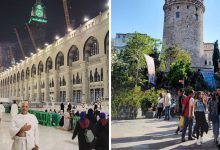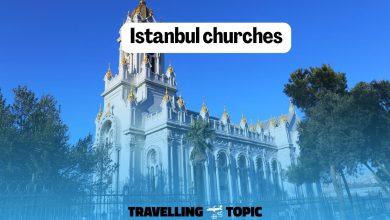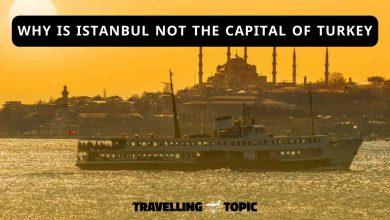Topkapi Palace In Istanbul | Entrance Fee + Opening Hours
Topkapi Palace Museum
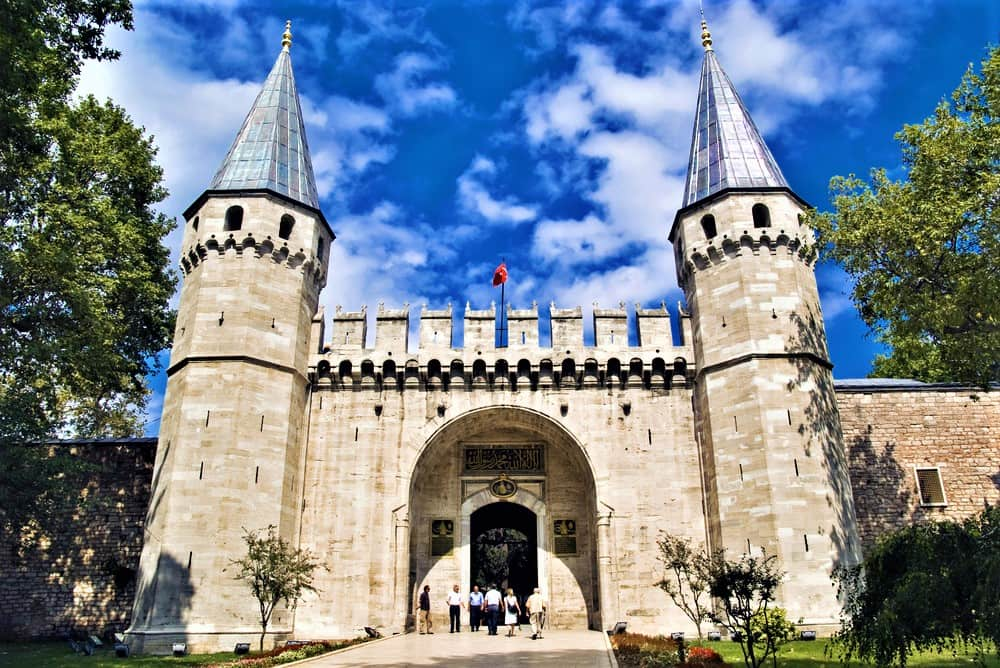
Stepping into one of the largest and oldest palaces in the world is like travelling through history and returning to several years ago. To experience this feeling, I suggest you visit Topkapi Palace Istanbul. However, before buying a ticket, it is better to completely familiarize yourself with this historical place.
In this article, I will provide you with a comprehensive guide to Topkapi Palace, sharing all the insights and experiences I gained during my visit. You will be introduced to every nook and cranny of this magnificent palace, ensuring you are fully prepared for your own visit.
Topkapi Palace entrance fee
Table of Contents
First, you should know that the cost of visiting this palace is divided into different plans, which I have included in the table below.
| Ticket price | Plan information |
| 52 Euros | Palace ticket + Guide + Harem’s ticket |
| 35 Euros | Palace + Harem |
To see other plans, I suggest you visit the www.getyourguide.com and book topkapipalace ticket.
Visiting Topkapi Palace takes about 4 hours, and standing in line and passing through the gates takes about half an hour.
- Topkapi Palace opening hours: 9 am to 6 pm
- Number of annual visits to Topkapi Palace: 3,000,000 people
Where is Topkapi Palace?
Topkapi Palace is located in the old part of the European part of Istanbul, in the Fatih district. This palace overlooks the Sea of Marmara and the Golden Horn.
Topkapi Palace is located near other important attractions in Istanbul, such as Sultan Ahmed Mosque, Basilica Cistern, Hagia Sophia, and the Archaeological Museum.
There are many ways to go from Taksim Square to Topkapi Palace, but I suggest you use metro line M2 to Aksaray station. Get off the metro there and walk a little to Yusufpaşa station, where you can take line T1. Take the tram and head towards Topkapi Palace. Get off at Gülhane station and walk to Topkapi.
History of Topkapi Palace
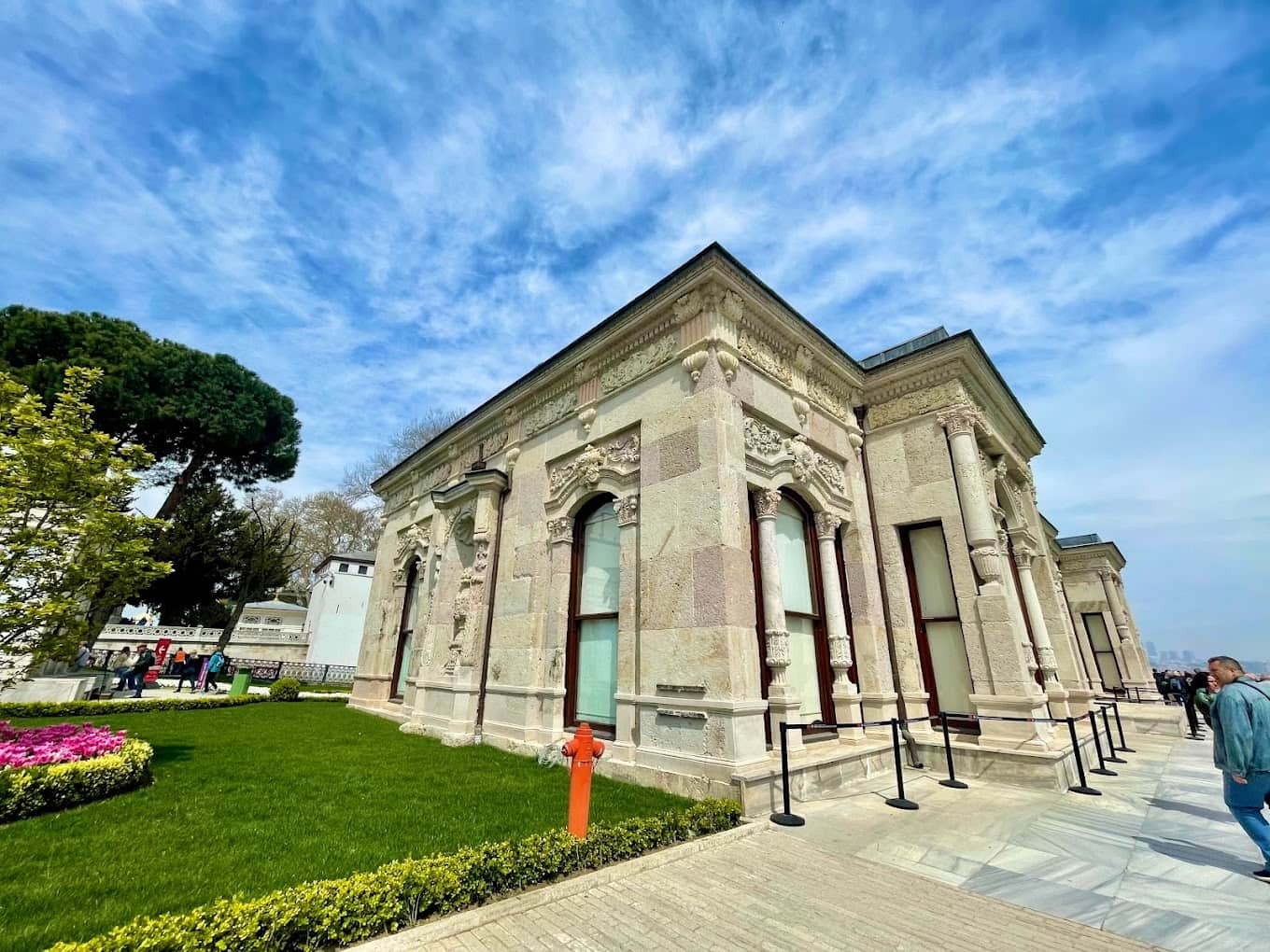
The construction of this palace dates back to the years between 1453 and 1465, and at that time, Sultan Mehmed II issued the order to build this palace.
Topkapi Palace was considered the political center of the Ottoman Empire between the 15th and 19th centuries and symbolized the authority of this government. About 30 kings ruled in Topkapi Palace for 400 years. In the 19th century, Dolmabahçe Palace was built and replaced Topkapi Palace.
Different parts of Topkapi Palace
If you want to visit this historical palace, it is better to familiarize yourself with the different parts of this palace first. In the following, I will introduce different sections based on what I have experienced.
Imperial Treasury
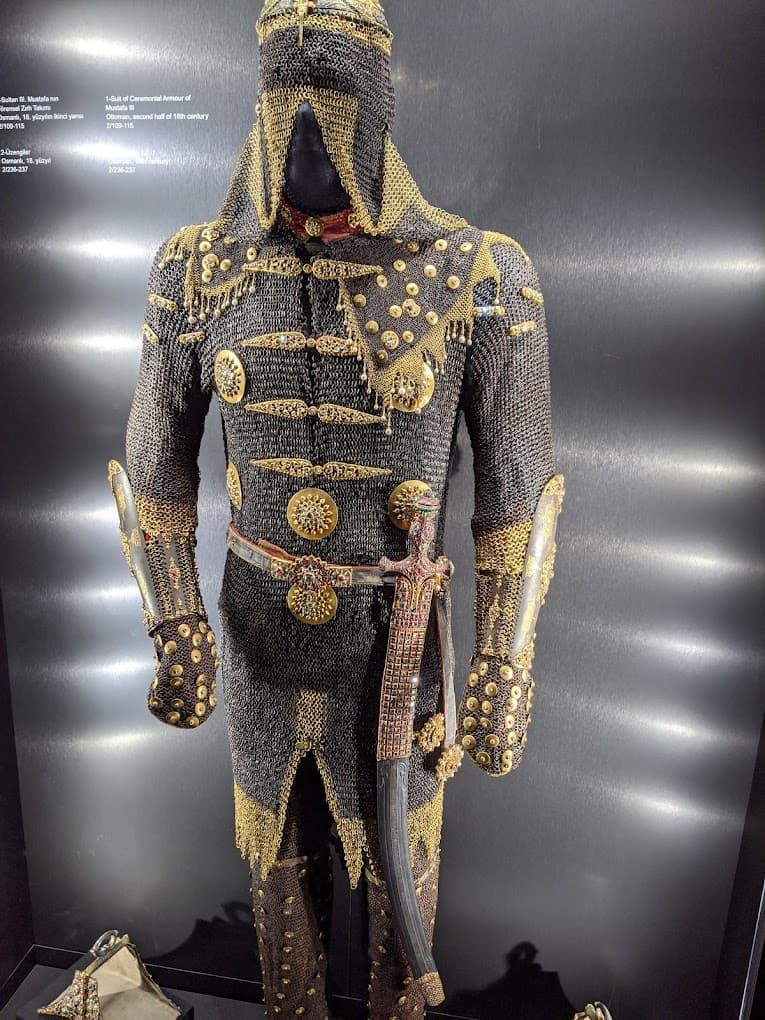
Since l liked this section, I assigned the first place for introduction to it. This treasury is located in the eastern part of the third yard, which is easy to access.
During the visit, one of the objects that caught my attention was the magnificent Suleiman’s sword, decorated with gold and beautiful jewels. Among other treasures of this treasury, I can mention the Kaşıkçı diamond weighing 86 carats, crowns and necklaces of members of the royal family, an all-gold dagger and scabbard, Shah Ismail Safavi’s belt, and precious stones.
Topkapi Palace Library
Among other parts of Topkapi Palace that are very valuable is the library. In this royal library, there are more than 20,000 different historical books that have the seal of Sultan Ahmed III on them.
In addition to books, I saw unique works of art, such as manuscripts, paintings, miniatures, etc., in this library.
Harem section
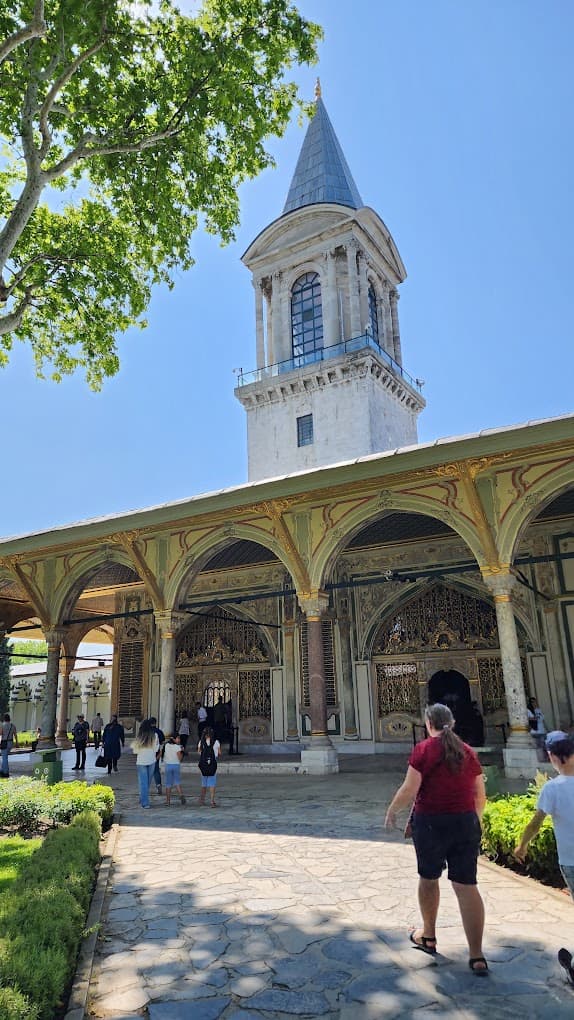
Harem is located on the west side of the second courtyard under the justice tower. You need a separate ticket to visit it, which is worth it.
The harems were special places for the king, where the kings slept with their wives. Some Ottoman emperors had 300 wives, all living in the harem.
In some periods, the number of people living in the Topkapi palace harem reached 474. The harem has now become a separate museum inside the palace, which has about 400 rooms, and there are special tours to visit it at certain hours of the day. It generally has six floors, of which one floor is usually allowed to see.
The first Courtyard
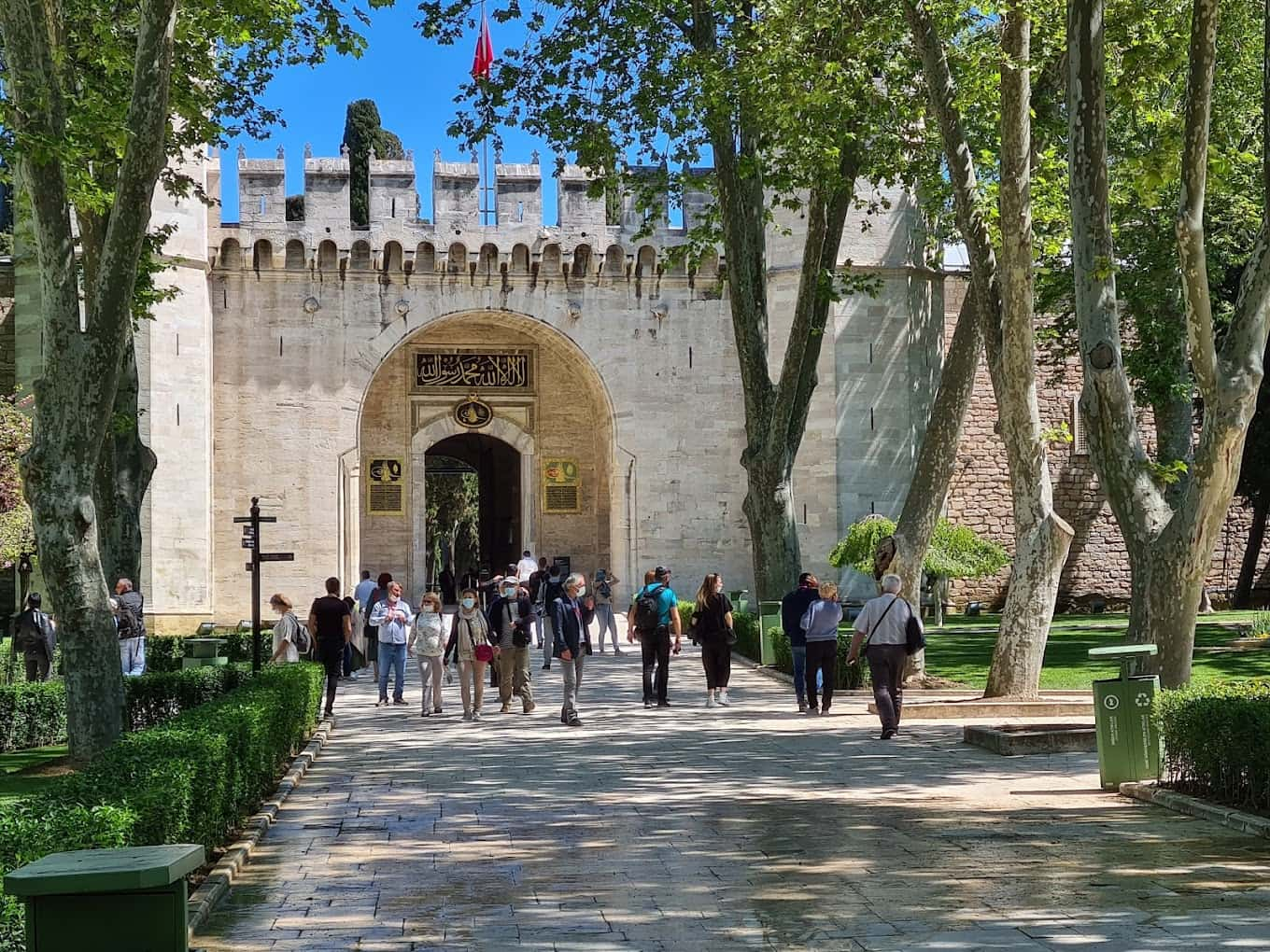
The Imperial Mint and an archaeological museum are located in this place. Before you go to the second gate, you will find the ticket booths and some gift shops on your right.
There are ruins and buildings left from the Byzantine era in this place. For example, “Hagia Irene” has a brick facade from the Byzantine era. This building is a church left over from the Byzantine Empire, which was used as an armoury and a place to repair weapons during the Ottoman Empire. Today, this church is also used for holding concerts or international exhibitions.
The second Courtyard
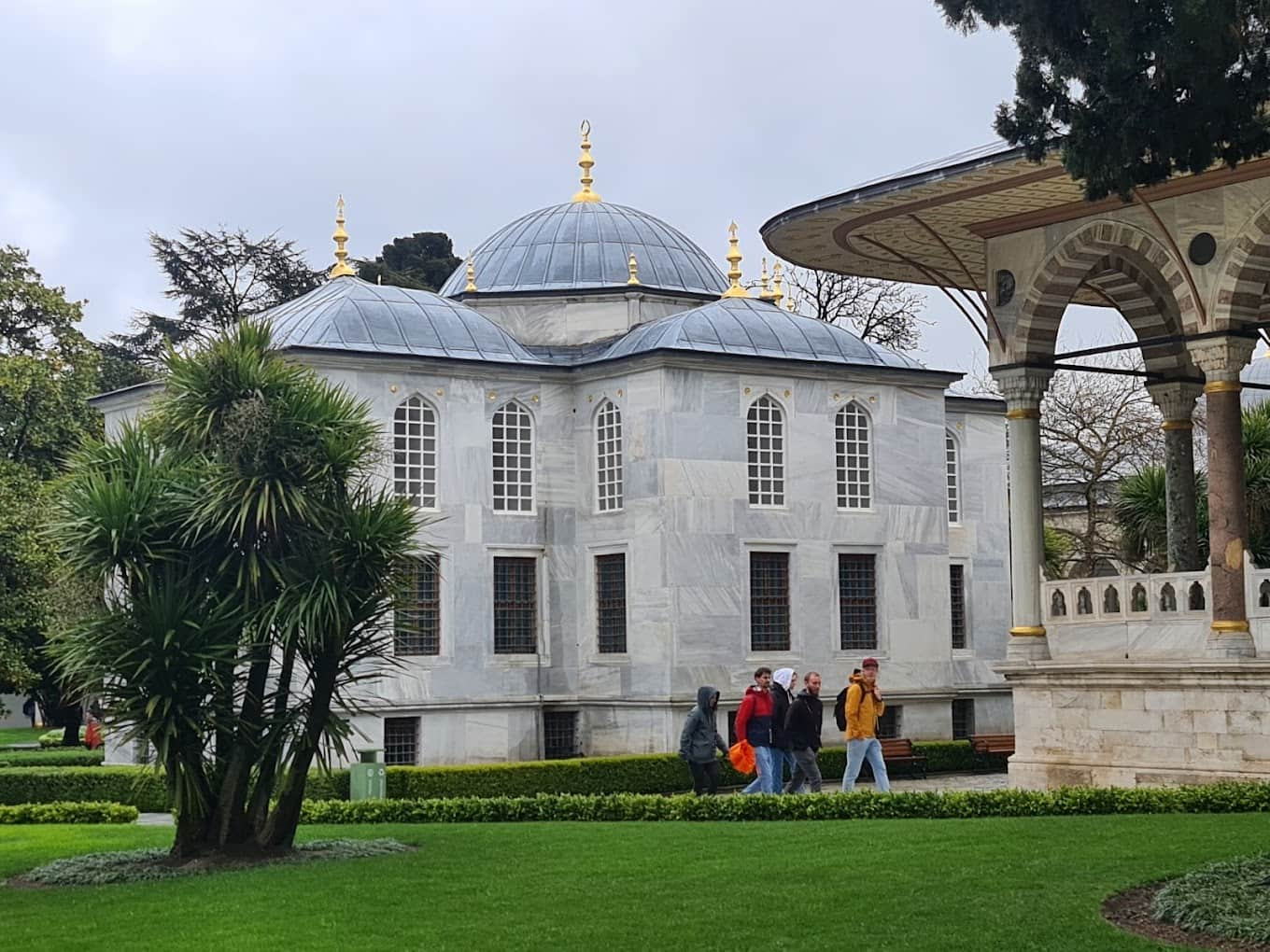
The second courtyard has two watchtowers and is known as Salutation Gate. The reason for this name is that everyone who entered this place had to greet the Sultan before entering. It is now the central gate for security inspection and ticket checking center.
On the right side of the courtyard are kitchens where 800 to 1000 cooks cooked food for 10 thousand palace residents.
On the other side of the courtyard on the left side is the residence of the Sultan’s advisers. The minister and the chancellor used this place to discuss daily issues.
The side room also has a treasury, which I introduced fully above. Next to these two buildings was the justice tower that monitored the coast. The entrance of the harem is also in this yard, right behind the counsellors’ residence room.
Third and fourth-Courtyard
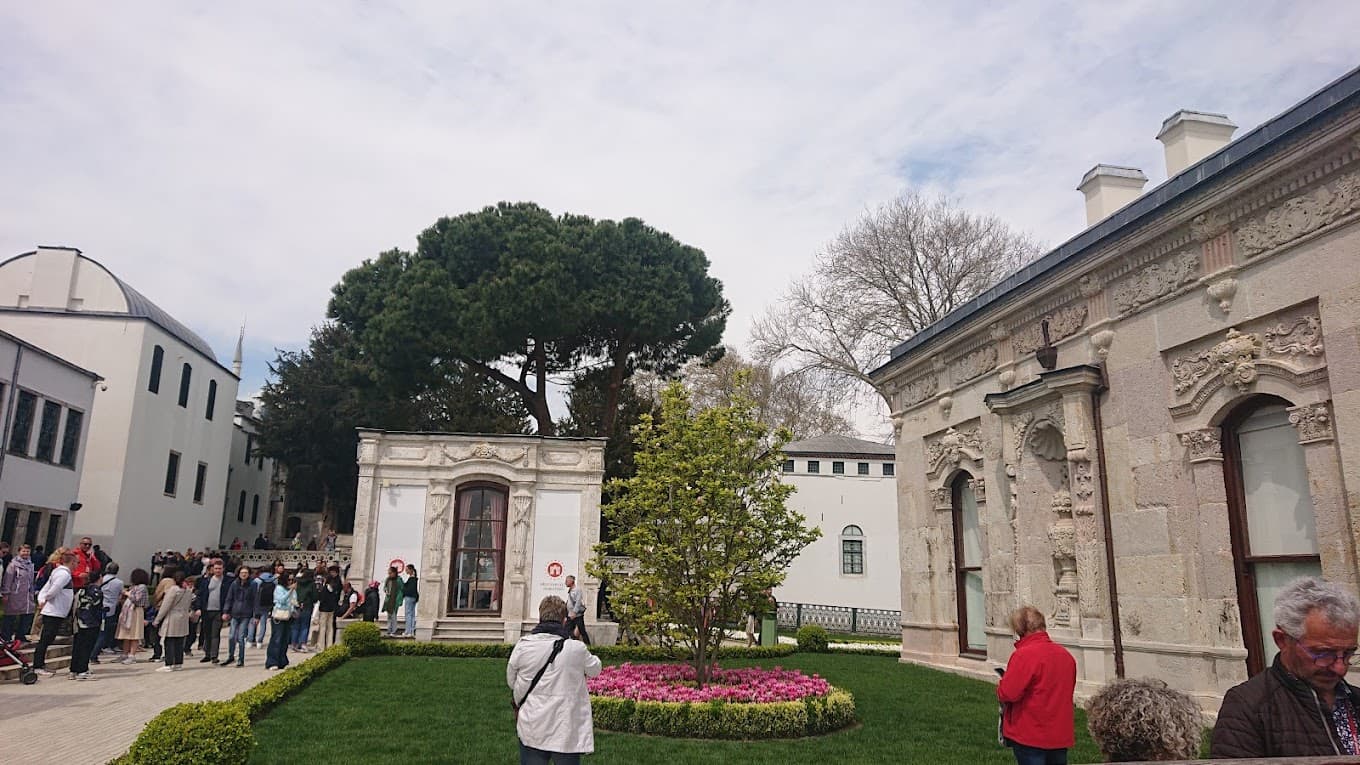
In the past, eunuchs guarded the third gate, and no one could pass through it without the Sultan’s permission.
When I entered the third courtyard, the first building I saw was the lecture hall where the Sultan used to meet foreign ambassadors.
Behind the lecture hall, you’ll find a library. On the right side of the courtyard, the collection of Sultan’s clothes and his treasury has captivated the interest of countless visitors, making it a must-see part of the museum.
On the left of the third courtyard is a center for preserving sacred relics, where religiously valuable objects are kept. This place has footprints, teeth and the hair of the Prophet Muhammad (PBUH). Next to this hall are many rooms with paintings of the Sultan, miniatures, old clocks, etc.
After the third yard, several passages lead to the last courtyard of the palace and the Sultan’s private garden. This garden has many tulips and roses and some rooms with a beautiful view of the Golden Horn. I preferred resting for a few minutes and drinking coffee in the garden.
All the chambers were built in the 17th century and are decorated with some of the finest tiles and pearls.
The circumcision rooms for the king’s sons and the Mecidiye chamber are also on the courtyard’s right side. They have views of the Marmara Sea and the Bosphorus Strait.
A cafeteria and a restaurant have been built right under the Mecidiye chamber, which can relieve the fatigue of the visit, although they are very expensive!
In conclusion
Visiting Topkapi Palace was an interesting experience because I learned about Ottoman history. Visiting this palace is highly recommended for people who love history because they can travel to the past by seeing the old things of the kings and get an idea of how the ancients lived.
